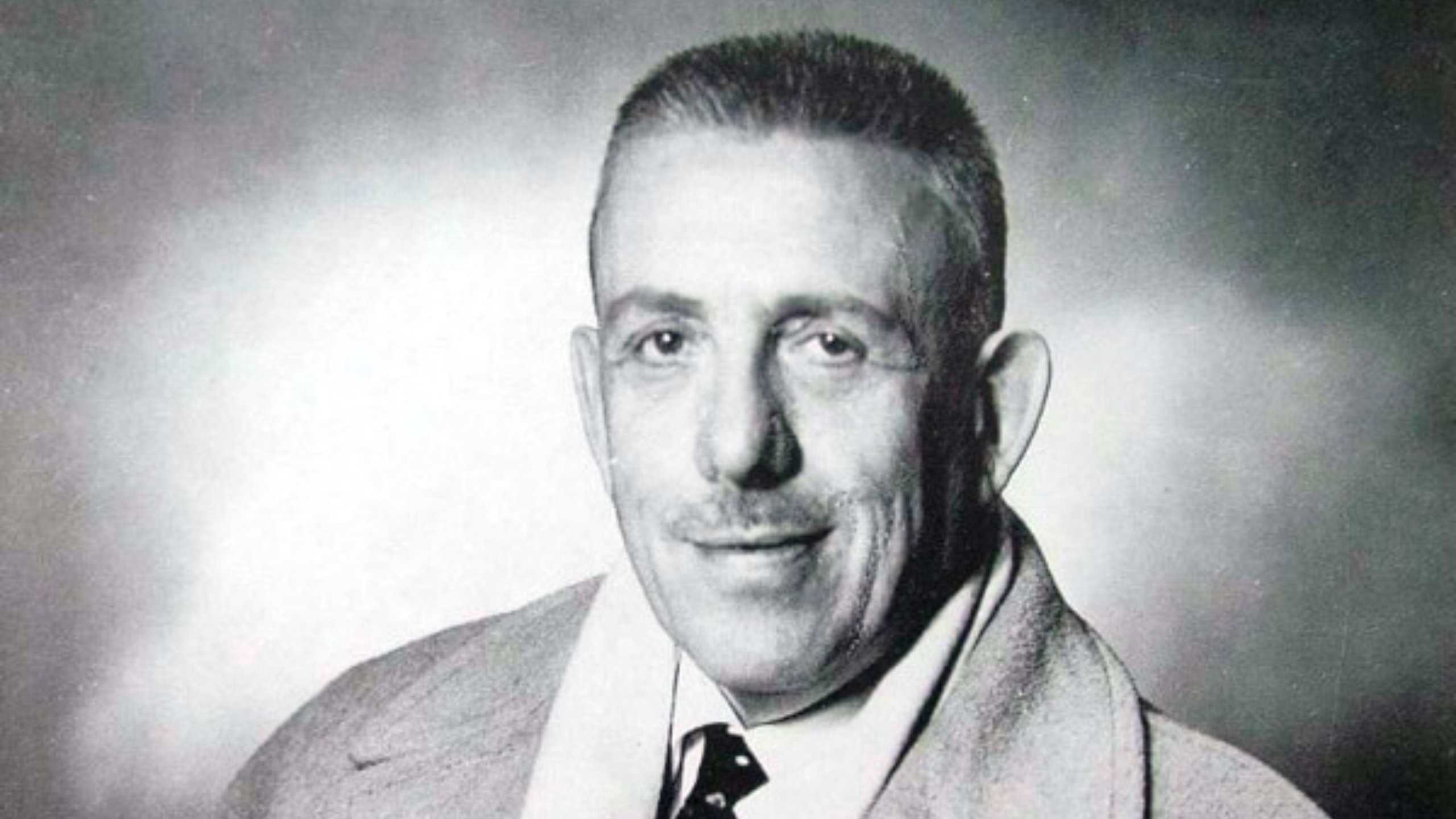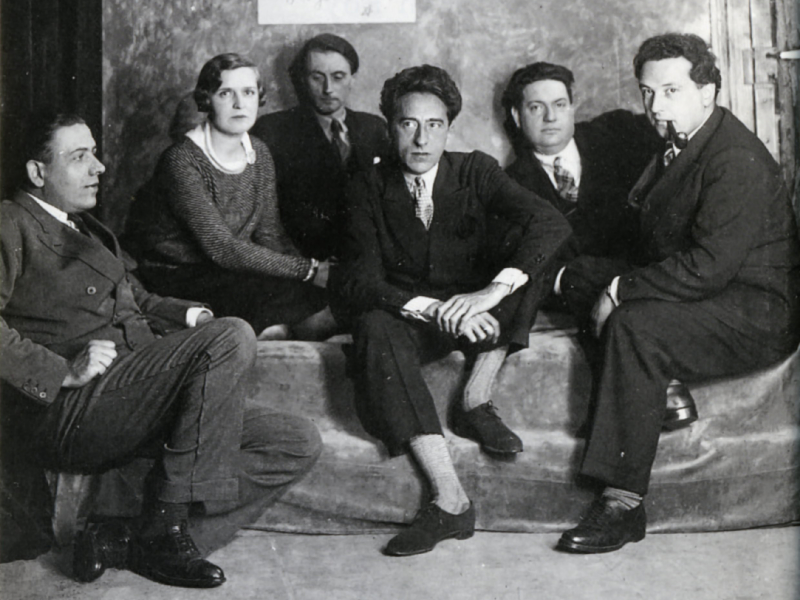Francis Poulenc
Recognised as one of the finest 20th-century composers

Francis Poulenc
Born 1899 (Paris, France)
Died 1963 (Paris, France)
What was Francis Poulenc’s early life like?
Francis Jean Marcel Poulenc was born at the turn of the twentieth century into a wealthy Parisian family. His father owned a successful pharmaceutical manufacturing business and he was a devout Roman Catholic.
Poulenc's mother, Jenny Poulenc, was less interested in religion and more keen on the arts. The composer would later draw on the two passions of his parents, religion and the arts, in his music.

Francis Poulenc aged seven in 1906.
Although Poulenc's great love was for music, his father did not view the arts as a stable career. Instead of allowing his son to go to a conservatoire Poulenc was enrolled at the Lycée Condorcet in Paris, on the condition that he would later be allowed entrance to the Conservatoire. However, this never came to pass: World War I and the death of his parents in 1915 and 1917 derailed the composer's plans.
Instead of going to the Paris Conservatoire, Poulenc studied under Spanish pianist Ricardo Viñes between 1914 to 1917. In later life Poulenc cited Viñes as a great influence on his career, technique and developing musical taste. Viñes was also an important figure as he introduced Poulenc to famous musicians of the time including Georges Auric, Erik Satie and Manuel de Falla.
'Viñes was a delightful man; a strange hidalgo with large moustaches, wearing a brown sombrero in true Barcelona fashion, and delicate button boots with which he would kick my ankle when I made a clumsy pedal change.'
Poulenc was also indebted to his childhood friend Raymonde Linossier for initiating him into the intellectual and literary circles in Paris. It was Linossier who first brought him along to Adrienne Monnier's bookshop Maison des Amis des Livres – the meeting place of the star poets of the age such as Guillaume Apollinarie, Paul Éluard and Louis Aragon. These avant-garde artists met at the bookshop to share their ideas on art and happenings of the day.

Francis Poulenc aged seven in 1906.
Francis Poulenc aged seven in 1906.

Photograph of Poulenc's piano teacher Ricardo Viñes.
Photograph of Poulenc's piano teacher Ricardo Viñes.

The bookshop La Maison des Amis des Livres.
The bookshop La Maison des Amis des Livres.

Photo of composer Igor Stravinsky.
Photo of composer Igor Stravinsky.
From debutant to his first taste of fame
After a short period spent serving in the French army during World War I Poulenc returned to music. By 1918 Poulenc was a more fully-formed musician and he was now ready to embark on his career as a composer. His first group of compositions included Rapsodie nègre (1917), the three Mouvements perpétuels (1918) and Toréador (1918) – a setting of Jean Cocteau's poetry.
Poulenc's early music shows the strong influence of Stravinsky and Satie on his style. There is a notable shift away from harmony, associated with Debussy's music, to the simplicity of Satie and the clashing notes and modernism of Stravinsky. Interestingly, Stravinsky became a patron of the young Poulenc and the composer referred to the Russian as a 'godfather figure' in his letters. Stravinsky helped to get Poulenc's first group of compositions published by the London publisher Chester in 1919.
Despite being part of a circle of famous friends, Poulenc did not enjoy fame himself straight away. It was only once Satie formed the group known as 'Les Six' that Poulenc gained national and international recognition.

Who were Les Six?
'Les Six' aimed to set music on a new course. Instead, Cocteau wanted the music of 'Les Six' to be free of the trappings of what had gone before (such as German romanticism and impressionism, heard in music by Debussy and Ravel) and to embrace often overlooked musical forms like cabaret, music hall and other popular genres.
But who exactly were 'Les Six' and what music did they compose? The group became the most recognisable brand in French music at the time, and consisted of Georges Auric, Louis Durey, Arthur Honegger, Darius Milhaud, Germaine Tailleferre and Francis Poulenc.
Soon after the group was created they set to work compiling L'Album des Six, an album was made up of piano pieces from the composers to which Poulenc contributed his Suite en trois mouvements. It was the only time that all six composers collaborated on the same project.

Les Six
Les Six

French Resistance in World War Two
'I know that Poulenc, Durey, Auric and Désormière were all active in the Resistance.'
Poulenc was a member of the Resistance organisation the Front National des Musiciens and during the war years he composed music which covertly criticised the Nazis.
During World War II France was under attack by the Nazis. The northern half of the country was occupied by German forces and controlled by the Vichy regime between 1940 and 1944. It was difficult to work freely as an artist or musician at this time, due to Nazi censorship, persecution and terror. Some members of the group, like Jean Cocteau, chose to befriend the Nazi occupiers rather than run the risk of being pronounced an enemy of the state. Contrastingly, Poulenc was a member of the Resistance organisation the Front National des Musiciens and during the war years he composed music which covertly criticised the Germans.
Poulenc's most important resistance works were undoubtedly his settings of the writings of French resistance poets like Louis Aragon and Paul Éluard. The communist poet Paul Éluard's works were even smuggled to London and broadcast by the BBC. In later years he hid subversive lyrics in his music for example in his ballet Les Animaux modèles (1940 to 1942 ) which contained an excerpt of an Alsatian song 'Non, non, vous n'aurez pas notre Alsace-Lorraine' (No, no you will not have our Alsace-Lorraine). This became a popular song when the Germans reoccupied the region in 1940. The ballet was premiered in Paris in 1942, conducted by Roger Désormière, in front of several German officers but surprisingly the resistance lyrics seemed to go unnoticed!

Map showing the stages of German occupation in World War II. ©Encyclopaedia Britannica
Map showing the stages of German occupation in World War II. ©Encyclopaedia Britannica

French Resistance fighters ©Nara
French Resistance fighters ©Nara

Jean Cocteau's La voix humaine
Considered one of the most versatile artists of his generation Jean Cocteau (1889-1963) was an accomplished writer, film maker and artist. He is most well known for his novel Les Enfants Terribles (1929), his plays La voix humaine (1928), La Machine infernale (1934), and films like Beauty and the Beast (1946) and Orpheus (1949).
Cocteau's work is strongly connected with Surrealism, a cultural movement that aimed to unpack the complexities of the unconscious mind, bringing the unconscious together with conscious realms of experience to create 'an absolute reality, a surreality'.
In his monodrama La voix humaine the dramatist picks up on many surrealist elements – most notably the uncanny effect that the telephone line has on the human voice. The telephone became part of everyday life from the 1920s onwards and radically changed the possibilities of human communication. The plot is quite simple – Elle waits and receives a phone call from her lover. We only hear her voice, and never his, as she goes through stages of flirting, lying and pleading with the man on the other end of the phone. By the end of the play her emotional state has disintegrated and she becomes suicidal. Cocteau's play comments on the surreal and lonely experience of being nothing more than a voice at the end of a telephone line and we, the audience, become voyeurs to an intimate conversation.
'[Elle is] a lonely, isolated figure, with only the invisible audience for comfort, we assume the guise of voyeur, enchanted and confused by her often incoherent ramblings.'

Jean Cocteau
Jean Cocteau

From Drama to Opera
Cocteau's La voix humaine was premiered in 1930 at the Comédie-Française with the actress Berthe Bovy cast in the leading role. Poulenc remained close friends with Cocteau as part of Les Six, however he did not set many of the dramatist's works to music. It was Hervé Dugardin, the Paris director of Ricordi Publishers, who suggested that Poulenc should orchestrate the monodrama.
When composing the music, Poulenc strove to maintain the emotional intensity of Cocteau's original drama. He omitted only passages that he thought would reduce the emotional tension of the opera.
When it came to casting the lead role of Elle, Poulenc selected Denise Duval over the belle of the opera world at the time, Maria Callas. When Poulenc first met Denise Duval at the Folies-Bergère nightclub in Paris he 'was struck by her bright voice, her beauty' and he knew instantly that 'she would be the perfect interpreter of [his] music'. The pair enjoyed a close professional and personal bond in the last 15 years of the composer's life, and Denise was a great source of inspiration for Poulenc. The world premiere took place at the Théâtre National de l'Opéra-Comique with Denise Duval and the conductor Georges Prêtre.
In more recent year's Cocteau's play has been adapted for another artistic medium: the silver screen. In 2020, Spanish director Pedro Almódovar transformed La voix humaine into a film, The Human Voice, with Tilda Swinton playing Elle.
© Sony Pictures Classics

Denise Duval stars as Elle in the 1958 world premiere of Poulenc's opera La Voix humaine.
Denise Duval stars as Elle in the 1958 world premiere of Poulenc's opera La Voix humaine.

February 2022: Hear Poulenc Live
This February the LSO showcases the theatricality of French composer Francis Poulenc with Barbara Hannigan.
Conductor and soloists Barbara Hannigan showcases the theatricality of French composer Francis Poulenc at the Barbican.
Wednesday 23 February 6.30pm, Barbican
Half Six Fix: La voix humaine
With instructions for the stage
Thursday 24 February 7pm, Barbican
La voix humaine
Paired with Strauss’ Metamorphosen
What to expect
Barbara Hannigan conducts and performs La voix humaine with l'Orchestre philharmonique de Radio France. © France Musique.

